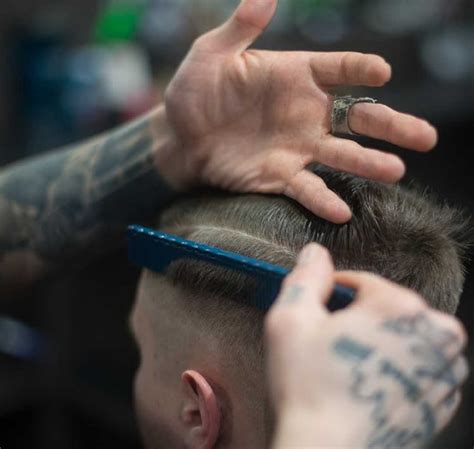Introduction
Hair loss affects millions of people worldwide, causing significant distress and negatively impacting self-esteem. Fortunately, advances in medical technology have made non-surgical hair replacement a viable option for individuals seeking to restore their hair without invasive surgeries or scarring.

Benefits of Non-Surgical Hair Replacement
- Immediate Results: Non-surgical hair replacement provides instant coverage for thinning or balding areas, improving the appearance of the scalp and boosting confidence.
- Natural Appearance: Modern techniques allow for the creation of realistic hairlines and strands that blend seamlessly with existing hair, making it difficult to detect.
- Non-Invasive: Unlike surgical hair transplants, non-surgical methods do not involve incisions or scarring, minimizing discomfort and recovery time.
- Versatile Options: There are various non-surgical hair replacement options available, including wigs, hairpieces, hair extensions, and scalp concealers, catering to different needs and preferences.
- Affordable and Convenient: Non-surgical hair replacement is generally more affordable than surgical options and can be easily maintained with regular cleaning and styling.
Types of Non-Surgical Hair Replacement
Wigs
Wigs are complete hair coverings that provide full coverage for the scalp. They are available in a wide range of colors, textures, and styles to match natural hair. Wigs can be made from synthetic or human hair, with human hair offering a more realistic appearance but requiring more maintenance.
Hairpieces
Hairpieces are partial hair coverings that are used to add volume or coverage to specific areas of the scalp. They can be attached using clips, tape, or glue and are often customized to blend with the wearer’s natural hair.
Hair Extensions
Hair extensions are individual strands or weaves of hair that are attached to existing hair to add length, volume, or color. Extensions can be made from natural or synthetic hair and are available in various textures and lengths.
Scalp Concealers
Scalp concealers are cosmetic products that are applied to the scalp to create the illusion of thicker hair. They are available in sprays, powders, and fibers that adhere to the hair shafts, making them appear fuller and denser.
Choosing the Right Non-Surgical Hair Replacement Option
The choice of non-surgical hair replacement option depends on several factors, including:
- Type and extent of hair loss: The underlying cause and severity of hair loss will determine the most suitable option.
- Lifestyle and preferences: The wearer’s lifestyle, preferences, and budget should be considered when selecting a method.
- Realistic expectations: It is important to have realistic expectations about the outcome of non-surgical hair replacement. Some methods, such as wigs, may provide a more dramatic transformation, while others, such as scalp concealers, may offer a more subtle improvement.
Maintenance and Care of Non-Surgical Hair Replacements
Non-surgical hair replacements require regular maintenance to keep them looking their best. This includes:
- Proper Cleaning: Wigs and hairpieces should be washed and styled according to the manufacturer’s instructions. Hair extensions should be removed periodically for cleaning and reattachment.
- Styling: Hair replacements can be styled using heat, color, and styling products. However, it is important to use products specifically designed for artificial hair to avoid damage.
- Maintenance: Wigs and hairpieces may need to be repaired or replaced if they become damaged or worn. Hair extensions should be checked and tightened regularly to ensure secure attachment.
Non-Surgical Hair Replacement for Special Applications
- Medical Hair Loss: Non-surgical hair replacement can help individuals who have lost hair due to medical conditions such as chemotherapy or alopecia.
- Alopecia Areata: Non-surgical hair replacement can provide coverage for areas of hair loss caused by alopecia areata, an autoimmune condition that causes hair to fall out in patches.
- Thinning Hair: Scalp concealers and hair extensions can help add volume and fullness to thinning hair, creating the appearance of thicker, healthier locks.
Strategies for Effective Non-Surgical Hair Replacement
- Consultation with a Professional: Seek professional advice from a hair replacement expert or stylist to determine the best option and ensure a natural-looking result.
- Realistic Expectations: Understand the limitations of non-surgical hair replacement and do not expect it to completely conceal all signs of hair loss.
- Proper Maintenance: Follow the manufacturer’s instructions for cleaning and styling to extend the lifespan of your hair replacement.
- Open Communication: Discuss your needs and expectations with your partner or a trusted friend to receive feedback and support.
- Experimentation: Don’t be afraid to try different options to find the one that best suits your lifestyle and preferences.
Tips and Tricks for Successful Non-Surgical Hair Replacement
- Use a wig cap or liner to protect your scalp and reduce friction.
- Blend hair replacement with existing hair using layering techniques.
- Style your hair replacement to match your natural hair texture and color.
- Avoid excessive brushing or combing to minimize shedding.
- Consider using a wig stand or mannequin to store your hair replacement when not in use.
Conclusion
Non-surgical hair replacement empowers individuals with hair loss to regain their confidence and improve their self-esteem. With a wide range of options available, there is a solution to suit every need and preference. By choosing the right method and following proper maintenance practices, non-surgical hair replacement can provide a natural-looking and fulfilling solution.
Additional Information
- The American Academy of Dermatology estimates that over 50% of men and 30% of women will experience significant hair loss by the age of 50.
- According to the International Society of Hair Restoration Surgery, over one million hair restoration procedures were performed in 2021, with non-surgical methods accounting for a growing share of the market.
- A study published in the journal JAMA Dermatology found that individuals who underwent non-surgical hair replacement experienced significantly improved body image and self-esteem.
- The term “trichoresuscitation” has been coined to describe the growing field of non-surgical hair replacement, which aims to revitalize and enhance the appearance of hair without surgery.
